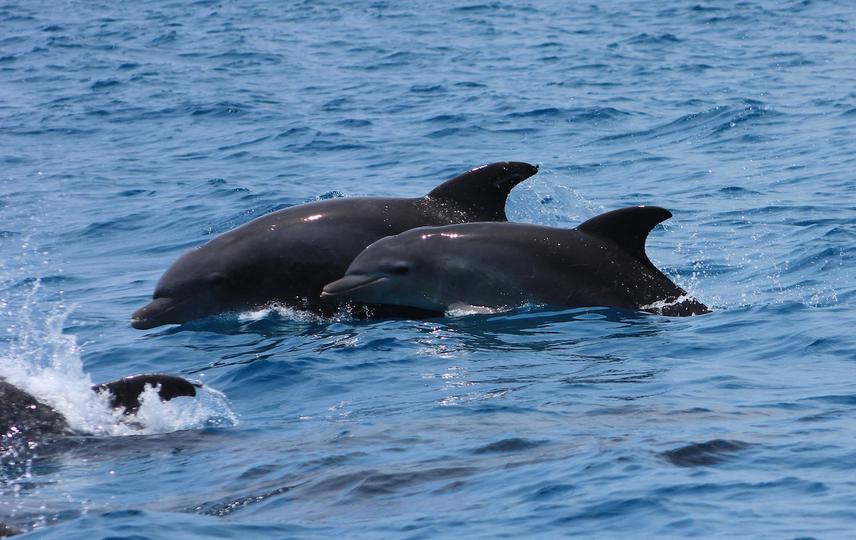Nohelia Esperanza Farías Curtidor
Other projects
16 Nov 2017
Diagnosis of Distribution, Ecotoxicology, and Conservation Threats of Small Cetaceans in the Guajira
The knowledge about marine mammals in the Colombian Caribbean is scarce. La Guajira holds a high diversity of marine species. The goal of this study is to determine ecological, genetic and conservational status of cetaceans in La Guajira.

An adult and a juvenile of bottlenose dolphin swimming.
The Guajira region in Colombia Caribbean holds a high biodiversity and stable marine ecosystems, mainly by upwelling during all year. However, cetacean research efforts in Colombia have focused on Pacific areas like Málaga Bay and Gorgona Island. Therefore, there are serious information gaps about marine mammals’ basic biology, conservation status, ecology, life histories, and population patterns in The Guajira region.
Coal mining is one of the main economic activities in the region, which has resulted in serious environmental problems. The area holds two ports, and local government plans to build at least one more port for coal transportation. This may generate several negative impacts on biodiversity in this region. For this reason, ecological, distributional, genetic, and contaminants patterns of cetaceans constitute the baseline information needed for conservation of marine ecosystems in La Guajira. In other words, defining status of marine mammals’ population could be the key to know health status of coastal-marine ecosystem, since most of marine mammals are top predators on trophic levels, and for this reason are good indicators of ecosystem status. Also, baseline information of marine mammals in La Guajira will promote the establishment of long-term studies addressing specific conservational issues of cetaceans in the Colombian Caribbean.
The Colombian Red List categorizes most of cetacean species reported in The Guajira like “Near Threatened”. Similarly, the book "Diagnosis of the status of knowledge and conservation of aquatic mammals in Colombia" and the compilation of the IUCN "2001-2010 Conservation Action Plan for the World 's Cetaceans " emphasize the enormous importance of studies about features of abundance, distribution and genetics of aquatic mammals. Also, species reported in the Guajira such as Stenella frontalis, Stenella longirostris, Steno bredanensis, and Delphinus sp. are listed like “Data Defficient” according to IUCN Red List. Because of their coastal distribution, many of these species are threatened by the effects of human productive activities, such as intensive fishing, hunting for use as bait, habitat degradation, and acoustic pollution. Consequently, it is impossible to establish real status of marine mammals’ populations and propose conservation strategies.
The results of this research will help to increase the knowledge of cetaceans in Colombia, and this information will facilitate to propose adequate management plans in the area for conservation of marine mammals and their ecosystems.